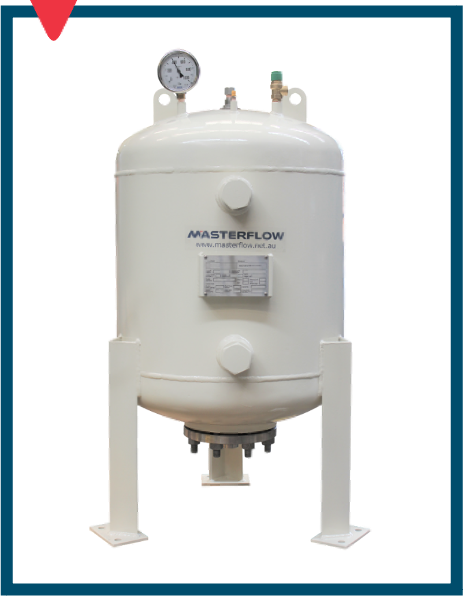How to Correctly Size HVAC Expansion Tanks
Every project’s HVAC system has its unique specifications and parameters. The system’s expansion tank must be sized accordingly, and has important responsibilities – including pressure maintenance, compensating for changes in volume, and preventing water losses. This makes correctly sized and installed expansion tanks vital for a system to function reliably.
At Masterflow, we’ve seen more than our fair share of the right and wrong ways to go about sizing and installing expansion tanks, having fabricated and supplied them for over 20 years.
This article will outline the factors that must be considered to ensure you avoid tank-related issues on your site. You’ll be able to send manufacturers the right details and ensure fit-for-purpose tanks, helping everyone in the process make informed decisions.
What is an Expansion Tank?
An expansion tank is a small pressure vessel used to protect closed-water heating systems from excessive pressure. This is done using a bladder that expands with water as the system’s total volume expands with heating.
Why do I need an Expansion Tank?
Expansion tanks compensate for fluctuating water pressure due to temperature changes within heating water and chilled water systems. By containing expanded water and expelling water to compensate for contraction, expansion tanks will maintain the water pressure of your heater/chiller.
This is vital in avoiding unnecessarily early replacement of your heater/chiller and more major issues, such as flooding, by maintaining a steady system volume.
Why does my expansion tank need to be carefully sized?
Allow us to explain the importance of correctly sized expansion vessels.
Expansion tanks that are smaller than ideal for your system will result in an inadequate ability for the tank to absorb expanded water, defeating the tank’s purpose and creating excessive stress on your plant equipment. Expanded water volume needs somewhere to go, and if your tank can’t facilitate it, it may result in ruptured pipes, creating pump cycling, splitting bellows and making relief valves excessively blow off – causing unwanted spillage and related hazards.
While it is often recommended to have extra volume in case of future system expansion, there is the potential drawback of arbitrarily restricting plant room space with a tank that is larger than needed.
Factors affecting Expansion Tank sizing include:
Before seeking a quote for your project’s expansion vessel, it is recommended that you compile data on the following factors, to be shared with your supplier:
Temperature range:
The water in your system will expand and/or contract more drastically, the broader its temperature range is. For this reason, a larger temperature range will correlate to the need for a larger expansion vessel.
Typical temperature ranges for systems include,
- Chilled water systems: 4 – 35°C
- Heating water systems: 15°C – Maximum Boiler Temperature
- Condenser water systems: 15 – 35°C
System volume:
As a rule of thumb, higher system volume means higher system expansion volume, which requires a larger tank. This works with the capacity (kW) of your boiler and/or chiller – which primarily influences your system’s volume.
Flow rate:
Higher flow rates will mean that in the event of excessive expansion and contraction, there is a greater risk of problems occurring within the system as the system’s components are bearing a greater load.
Plantroom location and Building height:
The higher the installation point of your expansion tank in relation to the rest of your system, the less pressure your tank should be set to. The reverse is also true – high tank pressure is needed when the expansion tank is beneath the rest of the system.
HVAC expansion tanks come pre-charged at a default pressure rating, which is adjustable and should be matched to your minimum system pressure (static pressure). Most tank-related faults on site are caused by installers failing to set pre-charge correctly, which is an essential component of accurate commissioning that should be conducted by the site technician. It is strongly advised not to arbitrarily install an expansion tank with its factory default pressure setting, as this factory setting is not a one-size-fits-all pressure level.
Moving on from expansion tank fundamentals:
Now that you’re equipped with the information your supplier needs to identify the right tank for your system, you are ready to size and install the tank(s) for your upcoming project.
If your project needs an expansion tank, Masterflow, with our exacting standards and decades of experience in manufacturing, is ready to discuss your project’s individual needs and identify the best fit for your site. Contact Masterflow for a quote on your expansion tank today.

